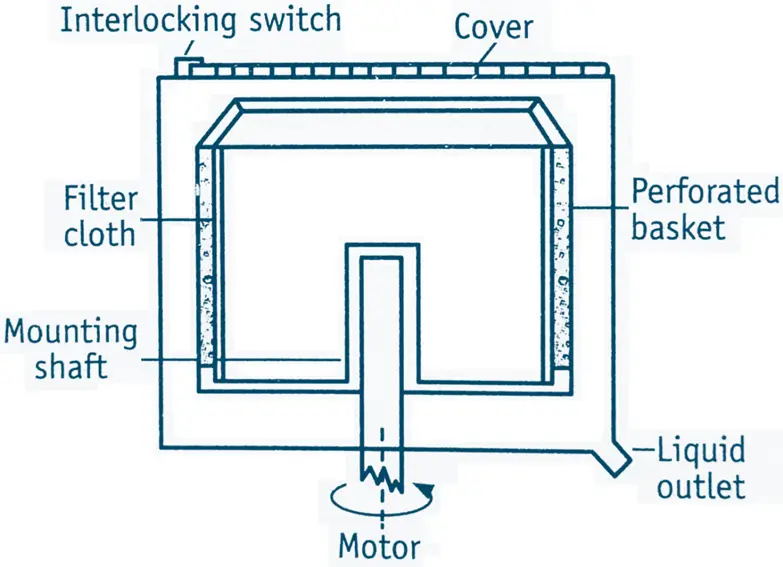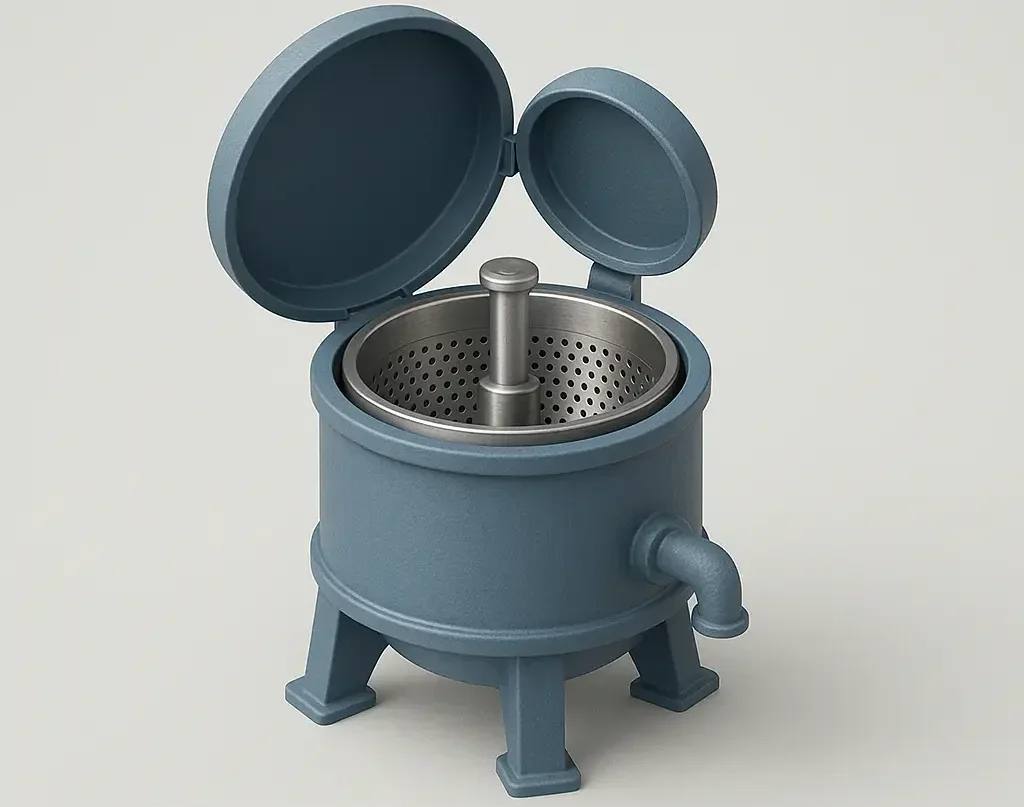Principles of Perforated Basket Centrifuge
- The perforated basket centrifuge operates on the principle of centrifugal force, which separates solids from liquids in a slurry by spinning the mixture at high speeds.
- The centrifugal force drives the liquid through the perforations in the basket, leaving the solid particles behind.
Construction of Perforated Basket Centrifuge
- Basket: Cylindrical basket with perforated walls.
- Drive System: Motor and spindle that rotate the basket at high speeds.
- Housing: Outer casing that contains the basket and collects the separated liquid.
- Feed System: Mechanism to introduce the slurry into the basket.
- Discharge System: Mechanism to remove the separated solids from the basket.
- Control Panel: For controlling the operational parameters like speed and timing.
This is a sample ad placement!

Working
- Loading: The slurry is fed into the rotating basket.
- Centrifugation: As the basket spins, the centrifugal force drives the liquid through the perforations in the basket wall.
- Filtration: The solid particles are retained on the inner surface of the basket, forming a cake.
- Discharge: After the separation is complete, the machine is stopped, and the solid cake is discharged manually or through an automated system.
- Collection: The separated liquid is collected in the housing and drained off through an outlet.
This is a sample ad placement!
Uses
- Chemical and pharmaceutical industries for solid-liquid separation.
- Food and beverage industry for clarification and purification processes.
- Wastewater treatment for sludge dewatering.
- Mining and mineral processing for ore and mineral separation.
Merits
- Effective for separating fine particles.
- High filtration efficiency.
- Relatively simple and robust construction.
- Can handle large volumes of slurry.
This is a sample ad placement!
Demerits
- Requires manual intervention for cake removal.
- Limited to batch processing.
- Potential for clogging of perforations.
- Higher maintenance due to moving parts.
Thank you for reading from Firsthope's notes, don't forget to check YouTube videos!

